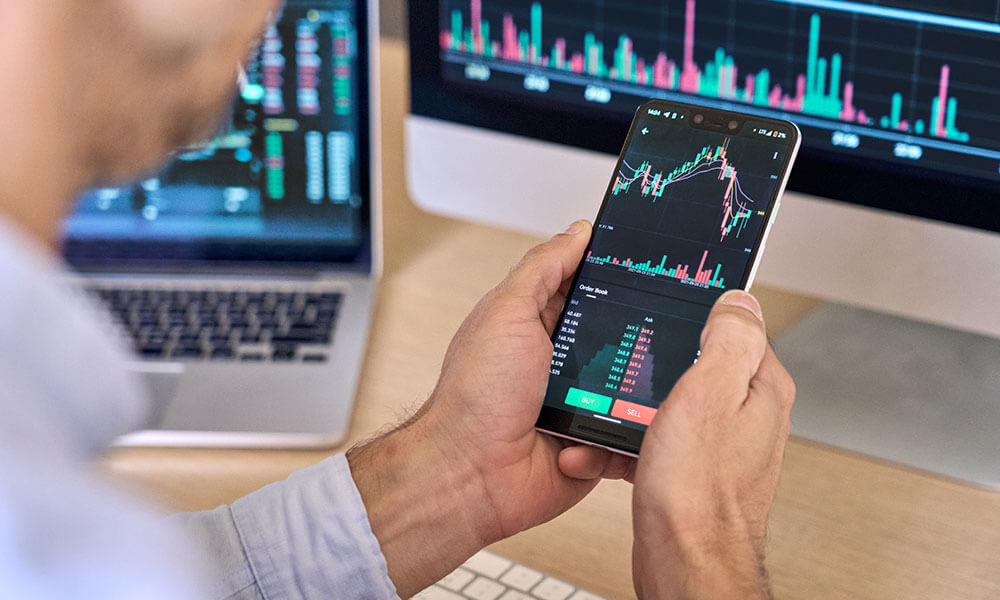
Types of investing for OFW’s
Once you’ve saved up enough money for emergencies as well as your daily needs and wants, you should consider growing your wealth by investing your extra money. There are many different types of investments you can make and doing this can help you achieve your long-term goals and prepare you for the life of your dreams.
How? Well, savings alone won’t be enough after inflation, and what you can afford today may be more expensive in the future. Thus, putting some of your savings into different types of investments could add to what you already have, leaving you with some extra cushioning for retirement.
We’ve already discussed the basics of investing in a previous post; so, in this article, let’s discuss different ways you can grow your money and find financial freedom.
What is investing?

According to the Bangko Sentral ng Pilipinas (BSP of the Philippine Central Bank), investing is the act of purchasing an asset that becomes more valuable over time. Once the value increases, you can sell the asset for a profit, giving you more money in return compared to what you had put in.
Compared to saving, investing takes more time and comes with risks. For example, you may end up losing some money if the value of the investment you made decreases instead of increasing over time. This would be the result of a lot of factors, including the economy and political climate, which you cannot control.
So, because investing comes with some unpredictability, you’ll need to figure out how many risks you are willing to take. From there, you can diversify your portfolio between high and low-risk investments that fit your risk profile.
Where should you invest your money?

Once you’ve assessed your risk appetite and risk profile, you can choose from the following types of investments:
- Opening a business
You can be your own boss and start a small business with some extra money savings. However, there’s still a catch… Without the right business know-how, you may end up losing instead of profiting.
For Miki Velasquez, former overseas Filipino worker (OFW) and co-owner of the popular dessert brand Maxi Mango, she had to endure hard times, maintaining a day job and contributing her salary just to keep her now defunct first business afloat. It took her and her husband some time before coming up with a successful franchise that has now set up shop in Singapore.
Opening a business isn’t as easy as it looks, so make sure to do your research, explore your options, manage your finances, and determine if you’re someone who’s willing to deal with the uncertainties that come with being an entrepreneur.
- Investing in non-financial assets

According to Investopedia, “A non-financial asset is an asset that derives its value from its physical traits.” This can be a piece of property, a car, and even intellectual property, like patents and trademarks. Owning non-financial assets can show how much you’re worth and can indicate if you’re a good candidate for a loan.
However, compared to stocks and bonds, non-financial assets are harder to sell. While stocks and bonds are sold and traded every day, letting go of non-financial assets takes time. You would have to find a buyer and negotiate the selling price, which has no set standard compared to financial assets. This makes non-financial assets more difficult to use as collateral when taking out a loan.
This doesn’t mean you shouldn’t be investing in pretty things. You’ll just need to spread out your investments.
- Putting your money in financial instruments
This type of investment has two types: fixed income investments and variable income investments. The former already has a set rate, so you know how much money you’ll get back once your investment matures. The latter changes depending on how the asset performs in the market.
Fixed income investments are low-risk and favourable for more conservative investors; however, they should expect lower returns. Meanwhile, variable income investments are for people with a higher risk appetite. Investing here may also reap higher rewards.
So which type of financial instrument should you choose? The best investment tip would be to diversify your portfolio and balance your investments between low-risk and high-risk assets.
How should you start investing in financial instruments?

While a business and house can wait, you can start small with the types of investments below:
Bank products
Your money can still grow to a small degree when you put it in a savings account with a minimal annual interest rate. While you’re still coming up with the funds to start investing, this can be your step one; plus, your funds will be insured by up to ₱500,000 by the Philippine Deposit Insurance Corporation (PDIC).
Bonds
With this fixed-income investment, you are investing in private companies or in the government to fund their projects. After your investment matures, you get your money back with interest. You can also sell your bonds at a profit before it matures.
When you invest in bonds, you can choose from three kinds:
- Corporate bonds – Corporations use these to fund their expansion and development.
- Municipal bonds – The government borrows money from your funds so they can work on public projects, like building schools, roads, hospitals, and new commuter routes.
- Treasury bonds – For the extremely cautious, you can start by investing in T-bonds, another government bond that yields low returns but is risk-free.
Stocks

With stocks, you can buy shares or partial ownership in a company. This means you earn when the company earns, and your profits come in the form of dividends.
However, stocks have a bigger risk compared to bonds, because there’s still a chance the company you invest in could close. The local economy and politics surrounding the company could also pull its stock value down.
To invest strategically, work with a stockbroker accredited by the Philippine Stock Exchange.
Mutual Funds
With a mutual fund, you pool your money with other investors and a fund manager assigns your money to stocks, bonds, and other financial instruments. With this arrangement, you earn by:
- Getting stock dividends
- Profiting from bond interest
- Increasing the funds’ value and selling your share at a profit
Before you start investing in a mutual fund, you’ll need to remember that this investment charges:
- An annual fee
- A fund manager service fee
- Money Market Funds
Unlike a savings account that lets you withdraw money when you need it, money market funds require you to lock in a certain amount for a specific time (at least three months to a year. When that holding time ends, you get your money back with interest.
If you’re worried about not being able to access your savings, you can still issue checks from a money market fund; however, this brings down the investment’s value.
Index funds

You can put some money in the Philippine Stock Exchange Index (PSEi) then earn dividends or interest. According to Security Bank, “What happens here is that the PSEi Index Fund will aim to mirror the performance of the PSEi index by holding stock of the companies listed within that index.”
When the index value rises, so does the fund value. Then you can profit by selling your share in the fund. You also won’t need to pay a fund manager, so that cuts down on your expenses.
Another type of index fund is the Exchange-Traded Fund (ETF). Unlike mutual and index funds, which are sold at fixed prices at the end of the trading day, ETFs are bought and sold at varying prices throughout the workday.
Options
Options are an agreement that lets you buy or sell stocks at a fixed price for a certain amount of time, regardless of what’s currently happening in the market. So, if stocks are more expensive, you will have the option to buy stocks at a lower value, based on that said agreement.
There are two types of options you can buy:
- Put – A bet that the stock will fall, meaning you can sell your stock at the fixed price
- Call – A bet that the stock will rise, meaning can buy more stocks at the fixed price
Working with options could get confusing, so ask around and consult with a financial adviser before you go all in.
Insurance
The most popular type of insurance is the variable universal life insurance plan or VUL. This type of plan ensures that you are covered in case anything bad happens to you; while at the same time, it also invests your money into stocks, bonds, ETFs, or other kinds of investments.
Investing money in the Philippines

Whichever types of investments you choose, keep your funds safe by using a highly secure money transfer platform like Kabayan Remit.
Kabayan Remit has the same physical security and encryption you see in banks and we are also government-approved.
To learn more about Kabayan Remit and our services, click here.
So, when you send funds to pay for your investments and insurance plans in the Philippines, you can rest easy knowing that you’re working with a brand that looks out for you.
